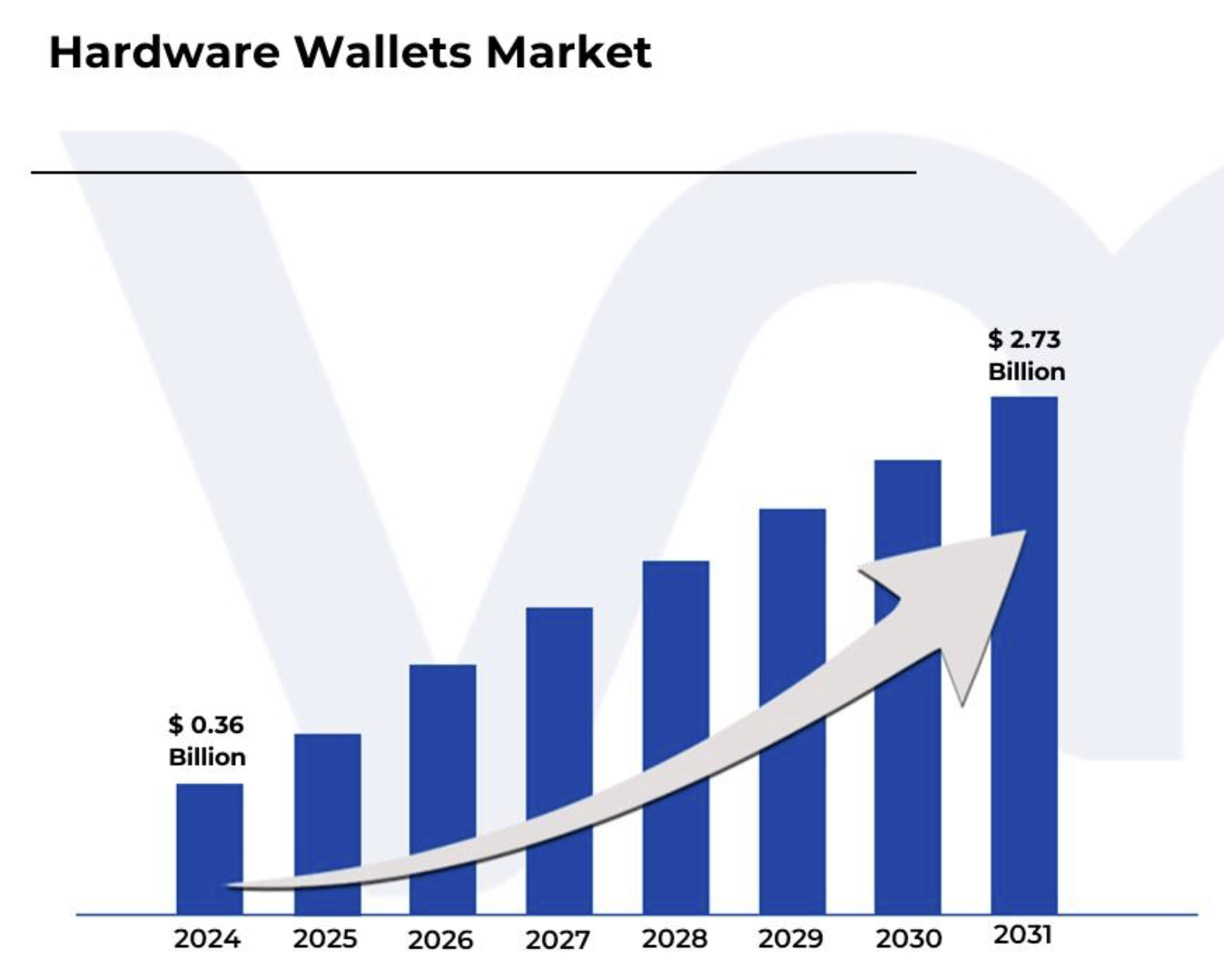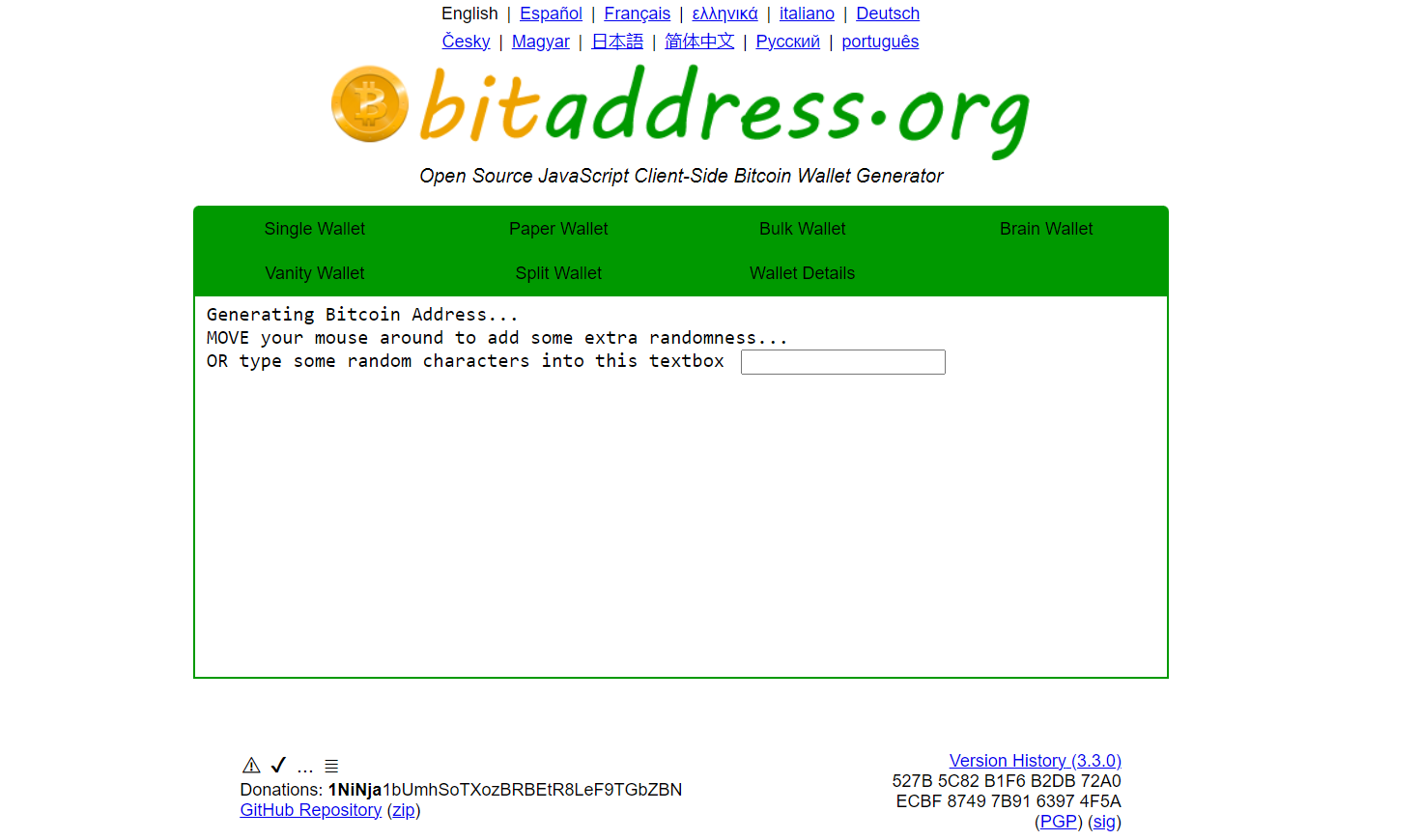Crypto wallets come in different forms, from mobile wallets to hardware wallets that look like USB sticks. One of the lesser-known (and used) types of crypto wallet is a paper wallet. Read on to learn about crypto paper wallets, how they work, and how to create one.
- What are crypto paper wallets?
- How does a crypto paper wallet work?
- Benefits of using a crypto paper wallet
- Risks and challenges of crypto paper wallets
- How to create a crypto paper wallet: A step-by-step guide
- Best practices for using a crypto paper wallet
- Do paper wallets have a future?
- Frequently asked questions
What are crypto paper wallets?
A paper wallet is a physical piece of paper containing a crypto wallet’s private and public keys. Crypto paper wallets contain cryptographic keys in the form of an alphanumeric string or QR code that allows you to store and access Bitcoin (or other crypto) offline.
Paper wallets are considered self-custody cold storage wallets because they store digital assets away from online threats and give users full control over private keys.
History and development
Paper wallets gained popularity around 2010 and were considered a foolproof way to store crypto before the advent of hardware wallets. They were recommended as the best way to keep private keys away from online hacks and give users full custody of their digital assets.
SponsoredThe popularity of paper wallets begain to decline around 2016 due to two key concerns. One was the fragility of paper; the other, the lack of a seed phrase to recover funds if you lose the paper.
Moreover, more secure and convenient cold storage options in the form of hardware wallets were developed. In 2025, the hardware wallet market is expanding at pace and is expected to grow at an average CAGR of 31.96% until 2031.

Despite this, paper wallets still exist and represent the most cost-effective cold storage option for crypto investors.
Initially, crypto holders created paper wallets manually by selecting random numbers from rolling dice and writing the generated key sequence on paper with a pen. However, this method was time-consuming and required significant accuracy. These drawbacks led to the development of paper wallet generator apps.
Paper wallet generators are software programs that generate private and public key pairs. Many generators are web-based, open-source, client-side programs written in JavaScript. However, web-based generators are vulnerable to online attacks and leaks of the generated keys.
How does a crypto paper wallet work?
A crypto paper wallet is a piece of paper with written or printed private and public keys, typically displayed as QR codes. These keys can be used to carry out cryptocurrency transactions. Paper wallets are usually created using key generator apps but can also be generated manually.
Private key and public key
A paper wallet has two strings of alphanumeric characters that represent private and public keys. A private key is the alphanumeric secret code you need to sign transactions and prove ownership of the digital assets in the wallet. A public key is an address you can share to receive crypto.
Private and public keys can be represented as QR codes on the paper wallet for easier transaction initiation through scanning.
Generating a paper wallet
You can generate a paper wallet in two ways: by selecting random numbers from rolling dice or by using a private key generator. While random number selection and writing them with a pen on paper is completely offline, it can be a time-consuming process, and mistakes can be made.
Using a wallet generator
To generate a secure crypto paper wallet, you need to choose a trustworthy generator that isn’t connected to the internet. Using a wallet generator that is disconnected from the internet keeps your private keys offline to enhance security.
A paper wallet generator generates random numbers to create the private and public keys and may include two QR codes representing the keys. You can manually write the string of characters on paper or print the wallet. Writing the keys needs accuracy and clear handwriting to reduce the chances of making an error.
Sponsored SponsoredPrinting the keys requires a secure printer that doesn’t preserve copies of printouts and uses a wired connection instead of wireless or Bluetooth to ensure the keys aren’t compromised. You also need a high-quality inkjet printer that won’t run or fade over time.
Once you have your wallet, ensure that there are no copies of the wallet left on your devices. After a paper wallet is generated, the user can receive funds by sharing the public key and authorizing transactions using the private key. You can manually input the keys or scan the QR codes using compatible software.
It’s important to note that a paper wallet is single-use only. When you input the private key into a compatible wallet to use your funds, the paper wallet is exposed to an internet-connected device. This exposure compromises your wallet security, and you need to generate a new paper wallet and empty the old wallet.
Benefits of using a crypto paper wallet
A crypto paper wallet is a reliable way to store your crypto. Let’s look at some advantages of using paper wallets.
Offline storage
Paper wallets are considered cold wallets because they can be generated offline, which removes the vulnerabilities that come with online wallets. If generated securely, a paper wallet can eliminate avenues for hackers to access your crypto and steal your assets. They can operate independently from the web and are resistant to hardware and operating system failures.
Security and privacy
All paper wallets are self-custody wallets that give users full control over their private keys. This autonomy of ownership over digital assets negates dependence on third parties, which enhances security.
Paper crypto wallets also allow users to access and manage their digital assets without providing personal identifying information or going through KYC. The wallet addresses act as pseudonyms, protecting user privacy. For many, this level of privacy is considered essential (both ideologically and practically) when interacting with any form of decentralized asset.
The simplicity of the paper wallet makes it a convenient and portable way to store digital assets. Paper wallets are ideal for long-term storage of digital assets since they are disconnected from the internet and can keep your assets safe and accessible.
SponsoredCost-effectiveness
Crypto paper wallets are an inexpensive way to manage digital assets. Paper Bitcoin wallets are easy to generate, highly portable, and don’t need a lot of storage space. They are the cheapest cold wallet option, with no subscription or set-up fees, and they use readily available tools like pen and paper.
Risks and challenges of crypto paper wallets
While paper wallets have a lot of benefits, they started losing trajectory due to their drawbacks. Let’s look at some risks of using a crypto paper wallet.
Physical damage
Paper wallets are susceptible to physical damage. The wallet is made of paper, which is fragile and prone to degrading, wear and tear, and destruction from environmental factors. Any damage to the paper wallet could lead to permanent losses of digital assets since there are no backup options. The printing quality can also lead to losses if the ink fades over time.
Loss or theft
Paper wallets are small and light which makes them easy to misplace and susceptible to theft. Like any other valuable, the paper wallets need to be stored in a secure environment like a safety deposit box or a safe.
Security considerations
When generating a crypto paper wallet, you need to use hardware and software that won’t compromise your private key safety. Using web-based generators or apps connected to the internet can give malicious actors access to your paper wallet. Your hardware can also contain malware that could give hackers access to your private keys during generation.
“Paper wallets were the gold standard of cold storage in the early days of Bitcoin, mainly because the market for hardware wallets was non-existent back then. Today, there are dozens of hardware wallets you can use to securely store your digital currency offline.
As such, hardware wallets have become the new go-to option for offline Bitcoin storage. We recommend to our customers to transfer their bitcoin to a hardware wallet from our mobile wallet once they have stacked a significant amount of sats to ensure that they can benefit from the increased security hardware wallets offer.”
Julian Liniger, co-founder and CEO of Swiss Bitcoin startup Relai, told BeInCrypto.
How to create a crypto paper wallet: A step-by-step guide
Creating a paper wallet using a private key generator is a straightforward process. Let’s look at how you can create a paper crypto wallet in three easy steps using BitAdress.
Step 1
Go to the official website of the paper wallet generator and follow the directions on how to generate the address. In this case, move the mouse around the screen.
Sponsored Sponsored
Step 2
Select “Paper Wallet” and choose the layout of your wallet. Print or manually write down the generated key.

Step 3
Store the wallet in a secure place. You can laminate it for added longevity. To reduce the chances of online hacks, generate your crypto paper wallet on BitAdress and install a secure operating system like Ubuntu. You can also get a flash drive to transfer the wallet file to the printer.
Best practices for using a crypto paper wallet
When creating a paper wallet, you must ensure the generator is open-source, disconnected from the internet, and has an appropriate source of random characters. A bad generator can make predictable character patterns that weaken the security of your private keys. Let’s look at other practices you can apply to your crypto paper wallet to safeguard your assets.
Storing safely
Paper wallets are fragile and prone to degrading and damage from different environmental factors. You can laminate the paper to keep it intact, but you need to do the lamination at home to reduce the chances of exposing your private keys. You can split the paper wallet into parts and store every piece in a different secure location to reduce the chances of theft. The recommended locations to store your paper wallet are safety deposit boxes or fireproof and waterproof safes.
Backup methods
Losing your paper wallet means you lose access to your assets since there is no recovery phrase. You can prevent losing your wallet by making multiple copies and storing them in separate secure locations.
Do paper wallets have a future?
Storing digital assets offline in a cold wallet is one of the safest ways to safeguard your funds. Paper wallets offer a simple and cost-effective way to manage crypto and have a long history in the community.
However, they have drawbacks that make them a somewhat antiquated method of storing assets. Users are adopting more functional and resilient wallets like hardware wallets to keep their assets offline. Crypto paper wallets have faded into the background as more advanced wallets entered the market, but they undoubtedly still serve a purpose when generated securely.

